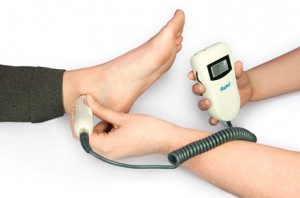Diabetes is a metabolic disorder that impedes blood flow. You are more likely to suffer from neuropathy because of this underlying condition. The excessive sugar levels in your blood reduce the supply of blood to the feet and therefore diabetic foot care becomes a common concern. The risk factor of damaging your foot anatomy is higher if you can’t manage your blood sugar. Let’s find out what you can do to keep your feet healthy and happy, despite the affected supply of blood and oxygen.
Why is diabetic foot care so crucial?
Due to diabetes, your blood loses its elasticity and as a result, the supply gets affected. When the blood supply is affected, problems start to occur from the lower limbs first. Therefore, corns, calluses, bunions, blisters and ulcers are pretty common for a diabetic.
Diabetics are at a higher risk of foot related complications because of neuropathy, i.e. nerve damage. The condition is described as a loss of sensation in the legs or extremities. As a result, more than 70% of diabetic patients lose the ability to feel the pain or discomfort caused by wounds or infections.
Nerve damage makes things complicated for diabetics as that neuropathy can be the underlying cause of dry skin and cuts around the lower limbs. If you are diabetic, it is highly likely that you can’t feel a minor cut, sore or blister on your feet. If you fail to notice it in a timely manner, it can end up as a severe complication and amputation could be the last resort.
To manage your condition, periodic inspection of the feet and timely consultation with a podiatrist are important.
What steps are involved in diabetic foot care?
Diabetics are vulnerable to foot related complications which might include pain, swelling, irritation, inflammation or infection. Diabetic foot care is a holistic regime that helps you to keep such problems at bay.

- Daily inspections: Check your feet every day, without fail. You obviously can’t feel any changes, so get yourself a magnifying glass to closely observe the skin. Check for sores, wounds and dry skin. Checking under the feet is especially important, get help from a family member or use a magnifying mirror to see more closely. Don’t ignore any colour changes or other abnormalities.
- Burns and blisters: Diabetics often get burns when they check the temperature of hot water with their feet. Neuropathy limits your ability to test the temperature of water with the help of your feet - as a result you might end up getting burns and blisters from the hot water.
- Diabetic footwear: Your choice of footwear plays a key role in the blood supply to the lower extremities. Get yourself footwear and socks that are specially designed for diabetics. These shoes have a wider toe box and the socks are seamless and generally padded to provide the required support while minimising moisture.
- Wear shoes: Avoid walking barefoot, whether you are at home or walking on Sunshine Beach. It can be hazardous to your feet as you won’t be able to notice the minor cuts and scrapes you get by walking barefoot.
- Infection care: Foot hygiene is very crucial for a diabetic. Keep your feet dry all the time and reduce the risk of toenail infection. Tiny discolouration on the toenail can be a fungal infection. If your skin is moist because of sweaty shoes, the infection can be aggravated and take longer to heal. Try to keep your skin dry all the time.
- Hydration: Dry skin is common for diabetic patients. Restrain yourself from applying too much moisturiser to hydrate the skin. Apply a generous amount on the heels but avoid getting too much lotion between the toes, the moisture can get trapped there and create challenges.
- Expert guidance: Podiatry is a branch of medicine that focuses on complications of lower limbs. Patients with uncontrollable blood sugar levels should get periodic consultation with a podiatrist to get timely treatment for any possibility of blisters, corns or infections.
What to expect from podiatry for diabetics?
A regular appointment with an experienced podiatrist is essential to manage your foot health.
- Your foot doctor can educate you about your condition and suggest proper steps for diabetic foot care
- They specialise in monitoring blood circulation, which keeps you informed about the severity of neuropathy
- They can provide the safest care and general treatment for common diabetic foot problems like corns, calluses, and toenail trimming
- A podiatrist should also be your preferred choice for foot pain treatment and footwear advice
- Regular appointments with a podiatrist are useful to learn about the safest practices of self-care which are essential for a diabetic.
Closing thoughts
- A stitch in time saves nine! Diabetic patients should have their feet checked regularly. Early detection of problems helps in avoiding the risk of complications. If you follow the diabetic foot care tips suggested in this post, you can have confidence about your foot condition. t is recommended to see a podiatrist regularly, especially In the case of excessive numbness and severe neuropathy - you need to visit a podiatrist’s clinic once every two months. For more information on neurological assessment and ingrown toenail treatment, visit the link given below.
https://www.suncoastpodiatry.com.au/diabetes/




Comments